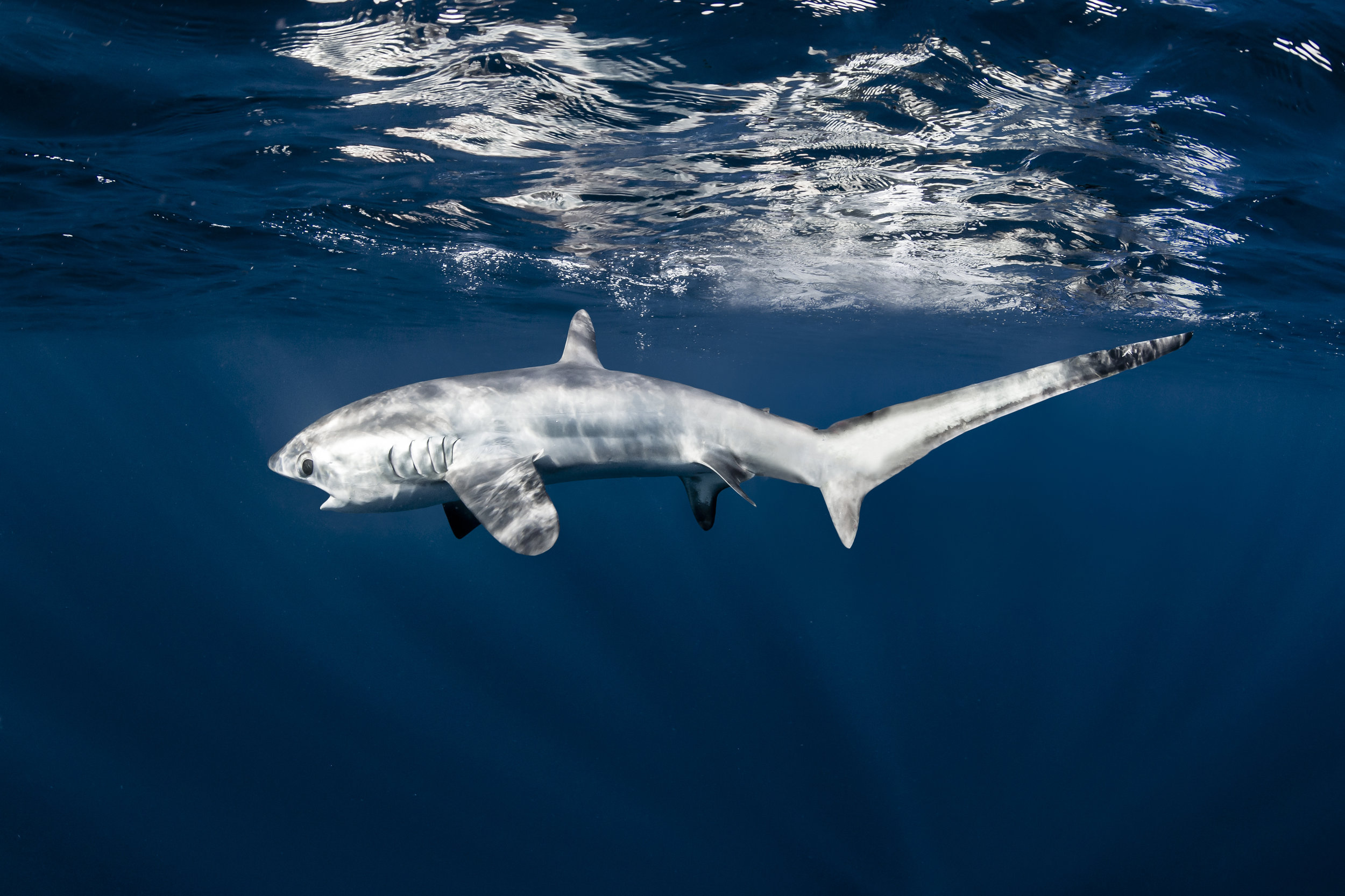Pelagic thresher shark | Shawn Heinrichs
Bigeye, Pelagic and common thresher sharks
All three species of thresher sharks are listed in CITES Appendix II. In a 2014 study, all three thresher shark species were identified as the most vulnerable to extinction of all pelagic shark families due to their slow life history and lack of global management. Thresher sharks are frequently caught in offshore tuna and swordfish long-line and gillnet fisheries, and also targeted in some parts of their range.
The Hong Kong shark fin market provided some of the best data to assess trends in trade in shark products. In the early 2000s, thresher shark species made up 2.0-2.7% of fins in trade. By 2015, this had fallen rapedly to some 0.03-0.53% of the sharks in the Hong Kong fin market. This is a 77-99% decline in thresher shark fins in trade. With a lack of management throughout the species range and inadequate enforcement of the limited management measures that existed, Parties in 2016 found that all these species were in need of trade management under the CITES Convention.
Silky shark | Alex Hofford
Silky sharks
Silky sharks are listed in Appendix II of CITES. Silky sharks are one of the most commonly caught shark species in tuna long-line and purse seine fishing gear. It is estimated that as of 2016, they had suffered declines of 60-80% in the Pacific Ocean, 69-90% in the Atlantic, and 50-90% in the Indian Ocean.
Mobula rays | Shawn Heinrichs
Mobulid Rays
All 11 mobulid ray species are listed in Appendix II of CITES. One of the least fecund elasmobranchs in the ocean, mobulid rays may only have one pup every two to three years. The schooling behavior of some of the species also makes them highly vulnerable to human exploitation. Globally, it is estimated that mobulid rays have declined 50-99% worldwide.


